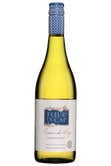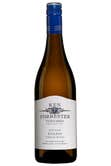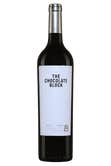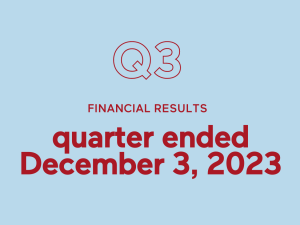What is a South African wine? Now that’s a good question, to which the answers are many. Whether you want a fresh Chenin Blanc or a bright Sauvignon Blanc, structured Cabernets and Bordeaux blends, spicy and sunny Rhône-style reds, easy-drinking Chardonnay, refined and balanced Pinot Noirs, or a sip of Vin de Constance, a legendary dessert wine enjoyed by kings and emperors over 200 years ago, the options are many and excellent.
While South Africa first made its mark internationally with some very competitively priced wines (a result of low production costs and often-favourable exchange rates), today, it’s showing increasing diversity and quality at every price range. Terroir-driven, even single-vineyard wines are showing up more and more, as their complex, balanced, and often downright fresh character draw increasing attention. The secret to their success – and the surprise they elicit – is likely due to their capacity to navigate an interesting midpoint between new world and old world styles.


Photo: Janik Alheit / Juan De Swardt
Oceans and mountains
The diversity of these offerings is borne of a climate that can go from cool and oceanic to hot and dry in the space of just a few dozen kilometers, depending on which side of a bay or valley the vines are, or how high they are growing. In the Western Cape region, where most of the country’s winegrowing takes place, vintners can harvest completely different grapes on both sides of a same mountain, depending on whether their vineyards are facing the cool sea breezes on the southwest or the hard African sun on the northeastern slopes. Nothing could be more different than the vast rolling hills and occasional mountainside slopes of the Swartland, and the narrow and ocean-facing valley of Hemel-en-Aarde (a name that translates to “heaven on earth” – and it’s hard to argue with this, so beautiful are the vistas it offers). While the former produces characterful, savoury, and sunny Chenin and Rhône reds, the latter specializes in fine, often complex Pinot Noir and Chardonnay whose expressions are tempered by the coolness of the nearby ocean.
The various grapes gain a remarkably different expression from valley to valley, allowing winemakers to play considerably with style. Syrah can go from sunny and fruit-driven to tight, savoury and peppery, providing an exciting range of possibilities that never spills over into heaviness or excessive richness. Chenin Blanc, of which South Africa grows significantly more than France, is essentially made as dry wine, whether in light and refreshing versions or complex, barrel-aged cuvées that can age well and stand with the best white wines of the world. South African winemakers have also made a considerable mark with Cinsault, a Rhône variety that shows delightful fruit, moderate alcohol, and light tannins, and is right in line with the current trend towards lighter reds. Meanwhile, Pinotage, the country’s signature crossing of Pinot Noir and Cinsault, deserves a second look, as the styles have become finer, lighter, and more expressive.
Heritage-forward
South Africa has been giving a strong push to preserve its viticultural heritage, thanks to an organization aptly named the Old Vine Project. While South Africa’s current presence on international markets is only a couple of decades’ old, the roots of winemaking in the country go back over 360 years. Beginning in the early 2000s, viticulturist Rosa Kruger began searching for old vineyards with some of the country’s top winemakers, to try and highlight the best that the country had to offer. With the effort gaining momentum, the project became a full-fledged organization that keeps a registry of the hundreds and hundreds of vineyards aged 35 years or more, including some spectacular old vines of Cinsault, Chenin, Sémillon, or Muscat, aged well over 100 years. The project encourages producers to bottle these wines separately and feature the official certification on the bottles. By showing the quality and value of these older vines, the hope is that winegrowers will get better prices for the grapes and wines they produce and keep them around, instead of ripping them out in favour of younger, higher-yielding vines.


Ken Forrester, winegrower
Full of characters
Another element that gives South African wines their originality is a whole set of innovative and colourful winemakers who have created strong brands featuring original blends and original varieties. A case in point would be Bookenhoutskloof’s Marc Kent, a man who went from waiting tables to spearheading several remarkable brands like The Wolftrap and The Chocolate Block. This last one was created as part of a kind of dare with his British importer and turned into a fantastically successful high-end wine. From a few hundred cases, this original Syrah-based blend (with other components varying year-to-year) now sells hundreds of thousands of bottles in dozens of countries and has become a bit of a cult wine.
Another such figurehead would certainly be Ken Forrester, who will joyfully pour you a glass of well-aged reserve Chenin Blanc and watch your reaction with a boisterous laugh and pride in his eyes, as you visibly wonder how such a friendly priced wine could show such complexity and drive, ten years down the line.
These pioneers of South Africa’s current international success are now being followed by a younger generation that has proven adept at expanding the range of wines and styles even further, whether by championing new grapes, creating unusual blends, or finding new sources of grapes in lesser-known areas. Winemaking may be centuries old around the Cape of Good Hope, but in many ways, it feels like the country has only just begun.
 Free in-store delivery with purchases of $75+ in an estimated 3 to 5 business days.
Free in-store delivery with purchases of $75+ in an estimated 3 to 5 business days.















